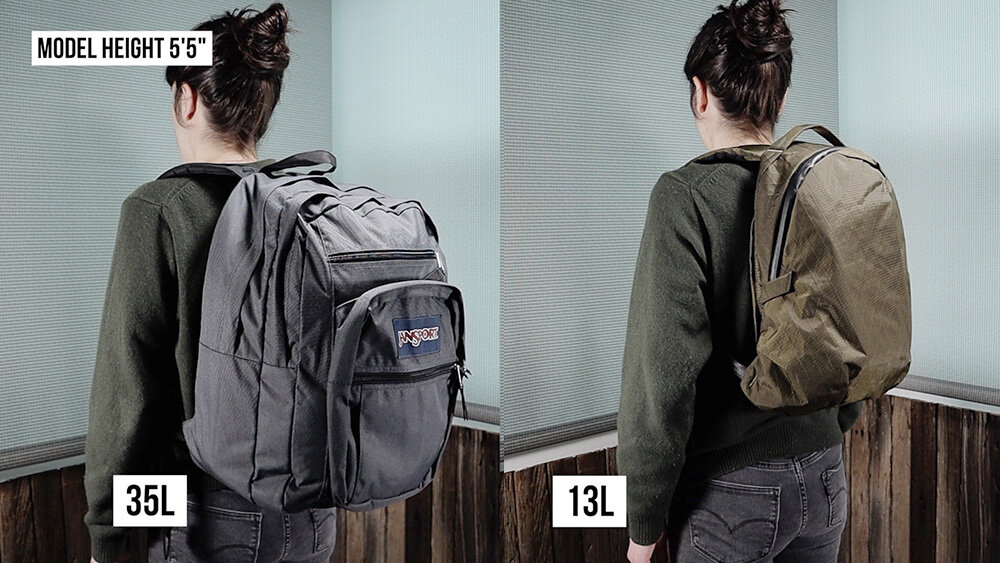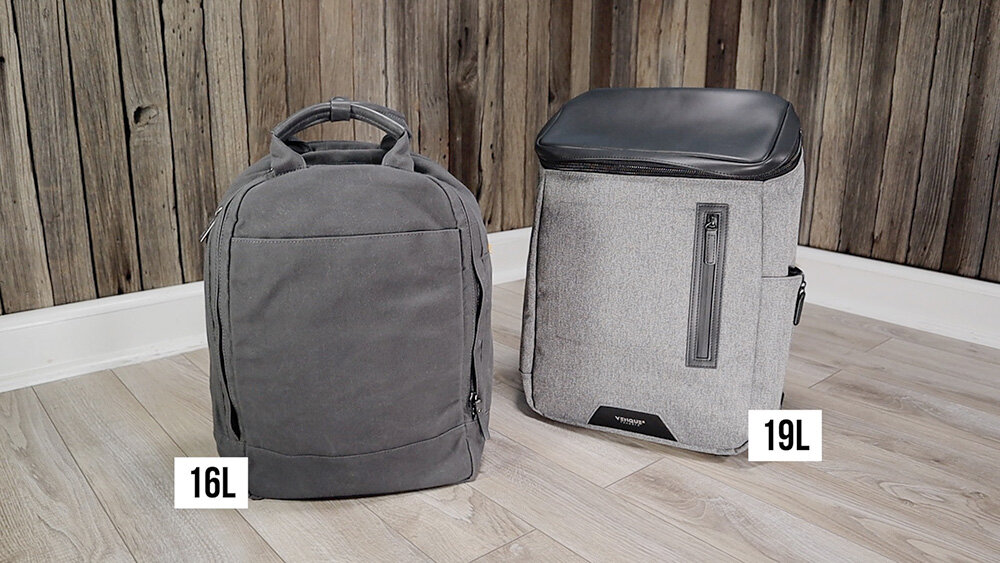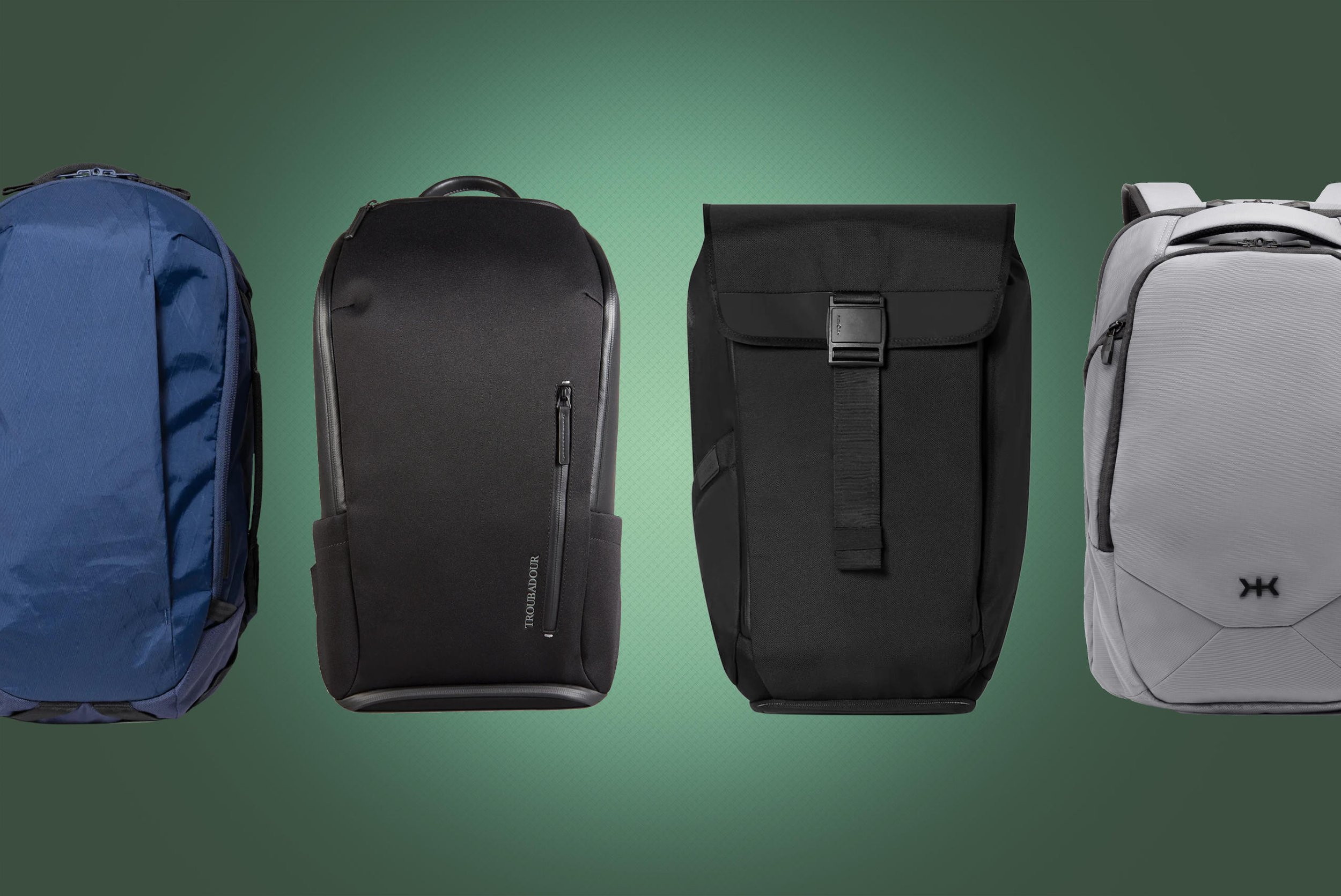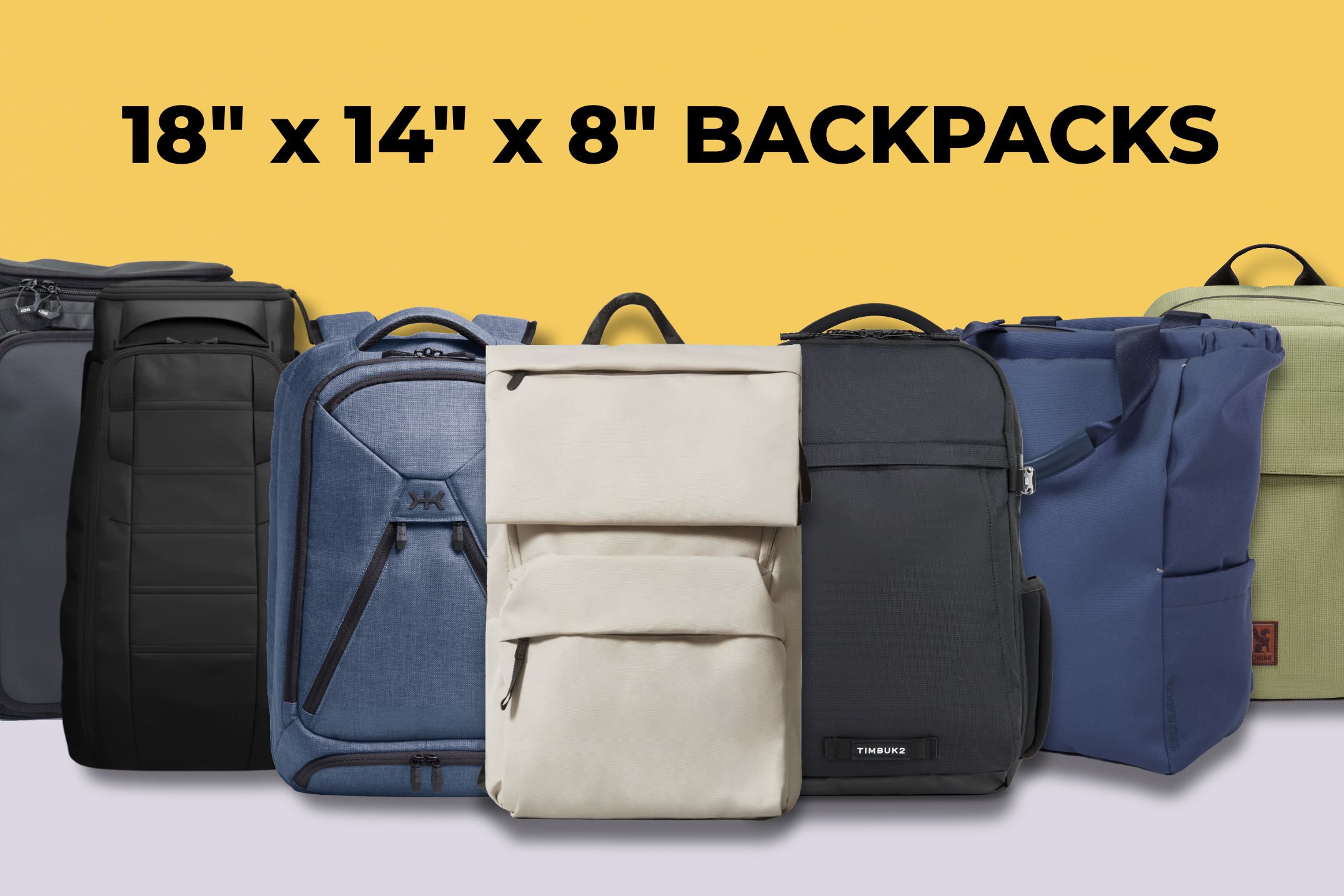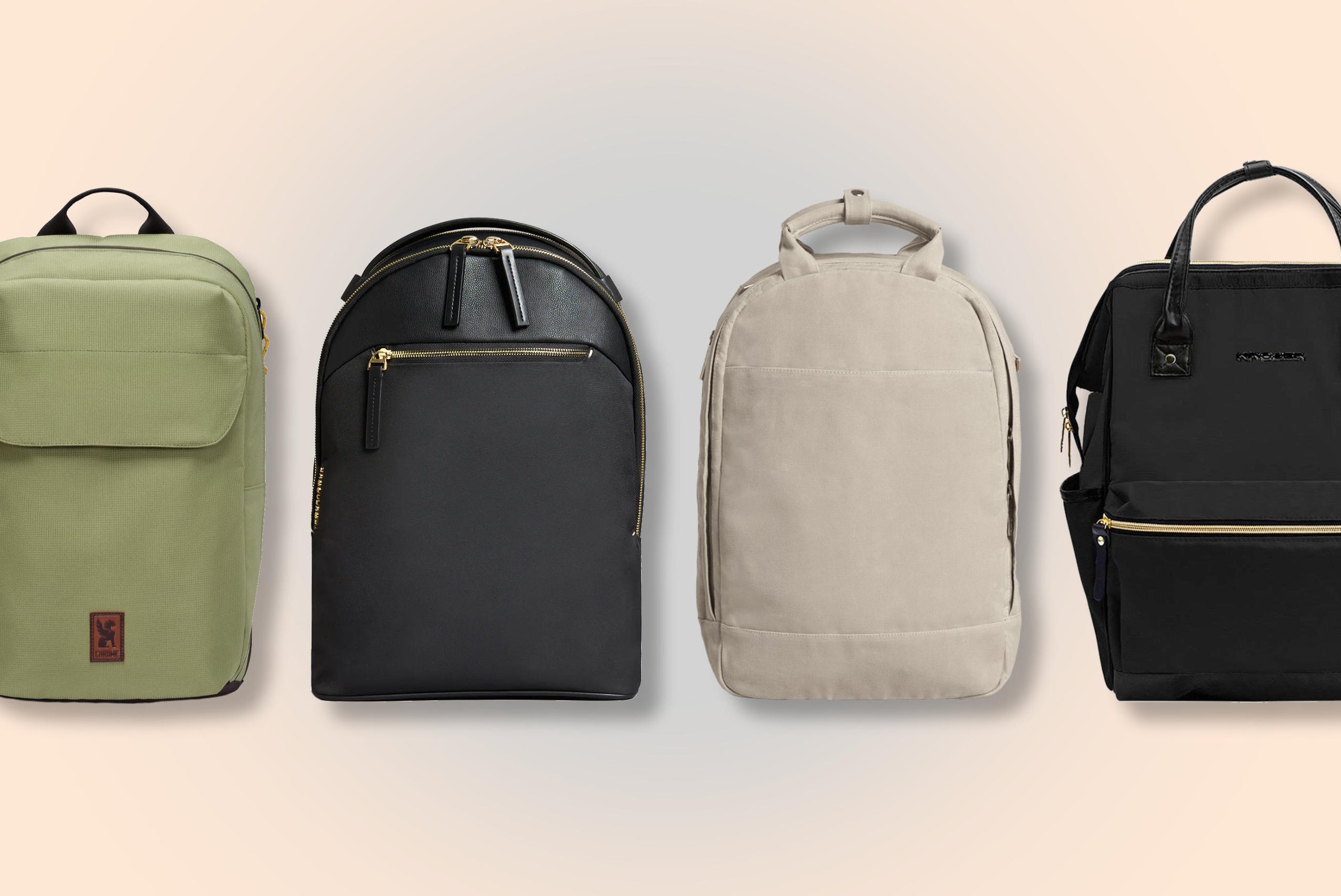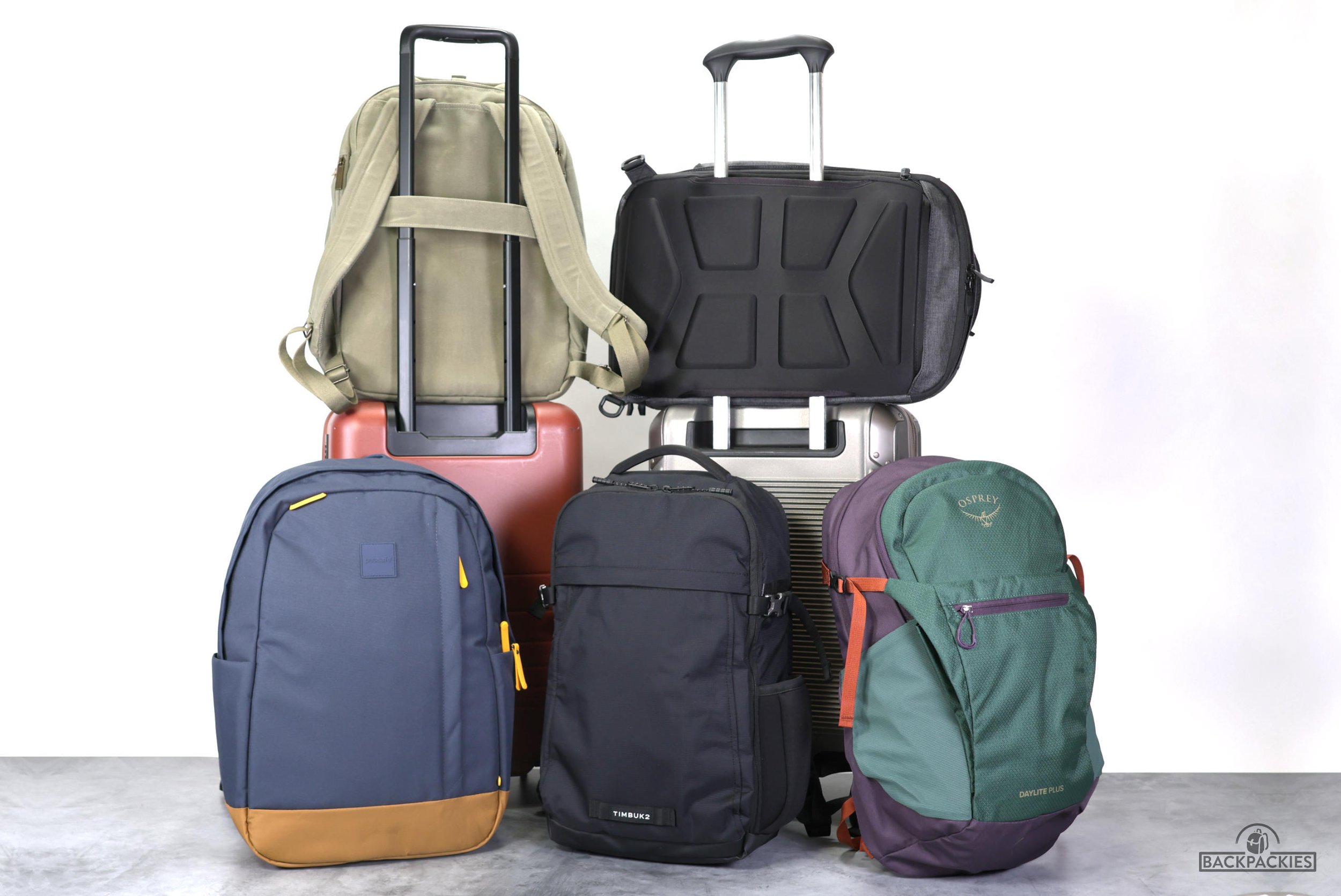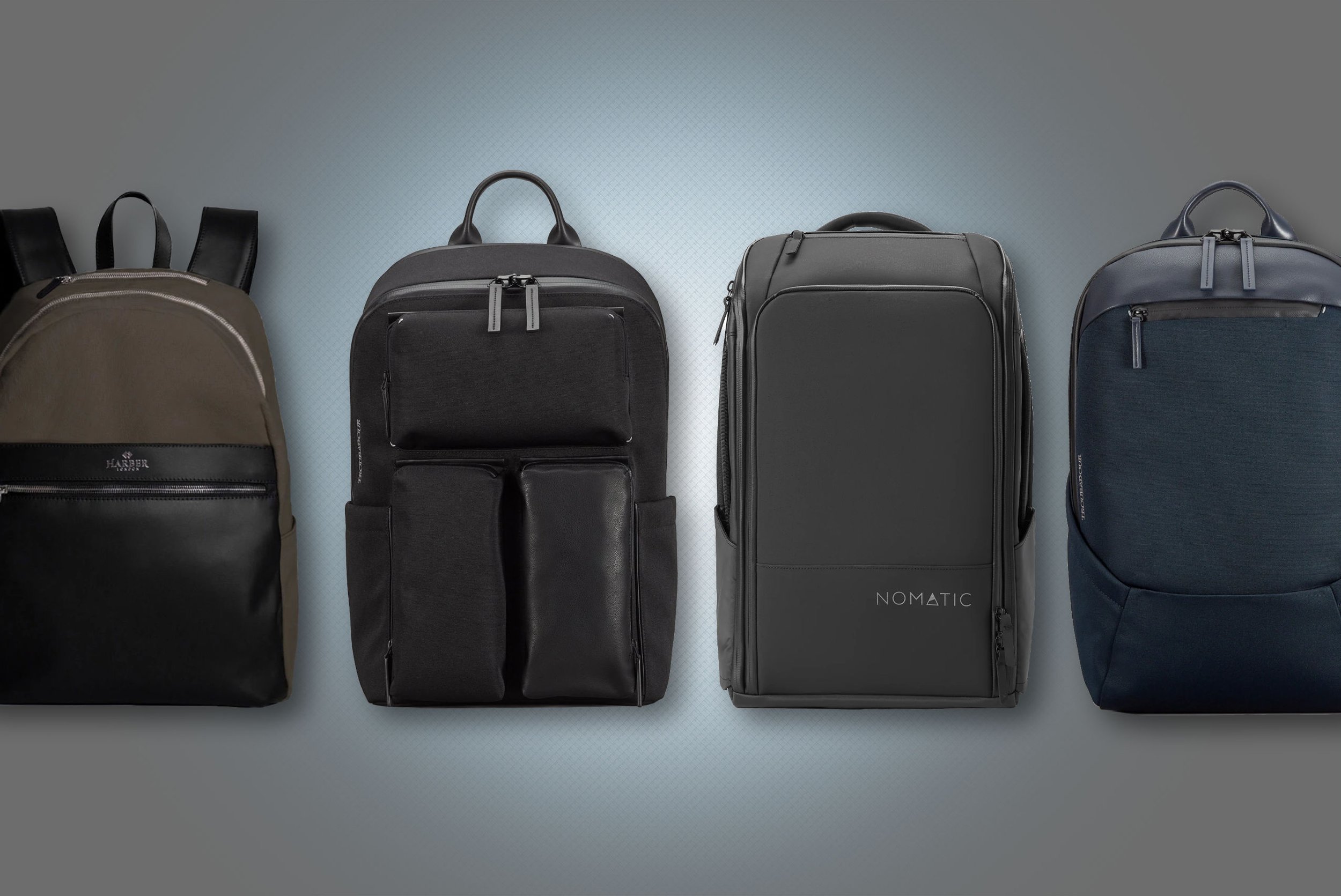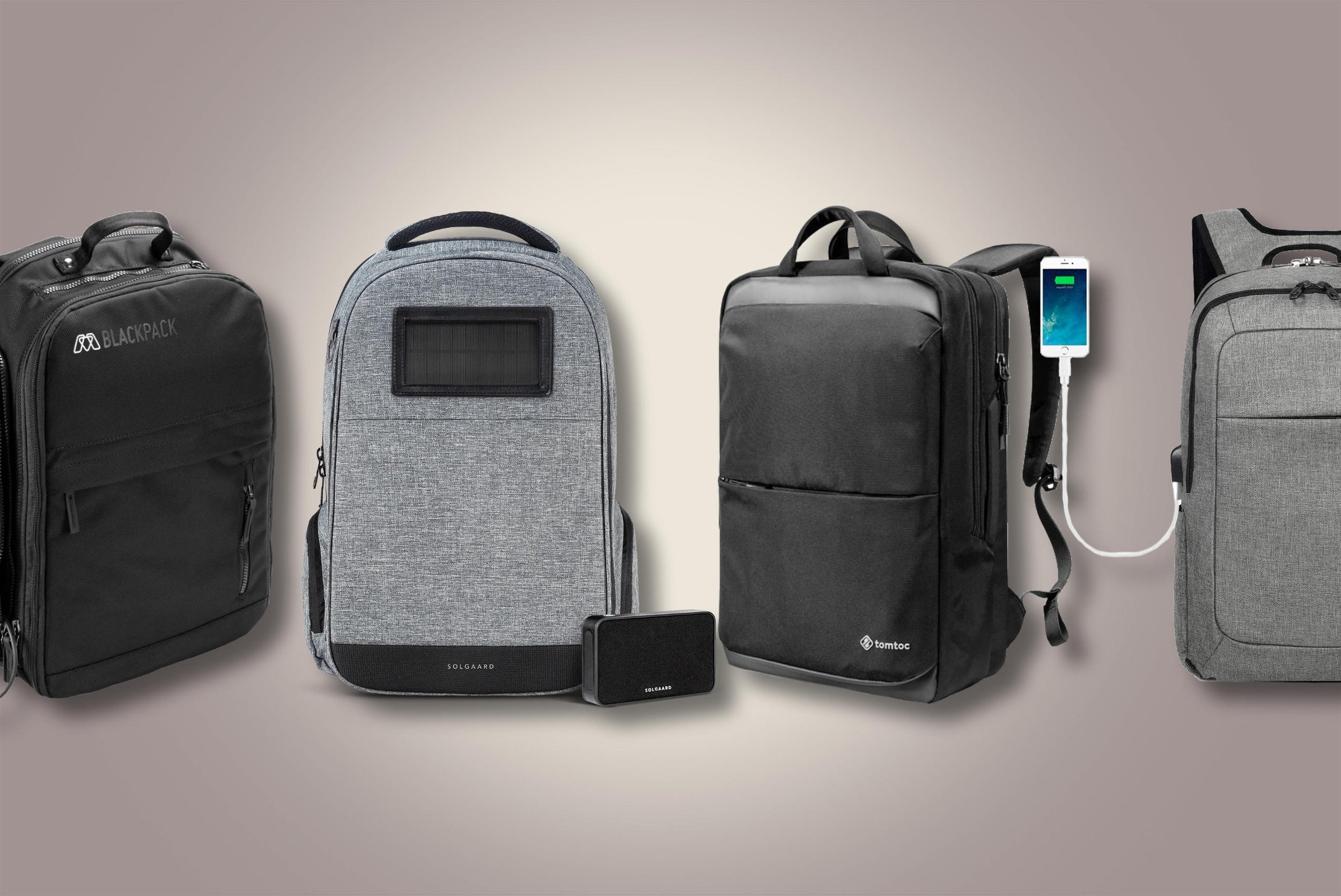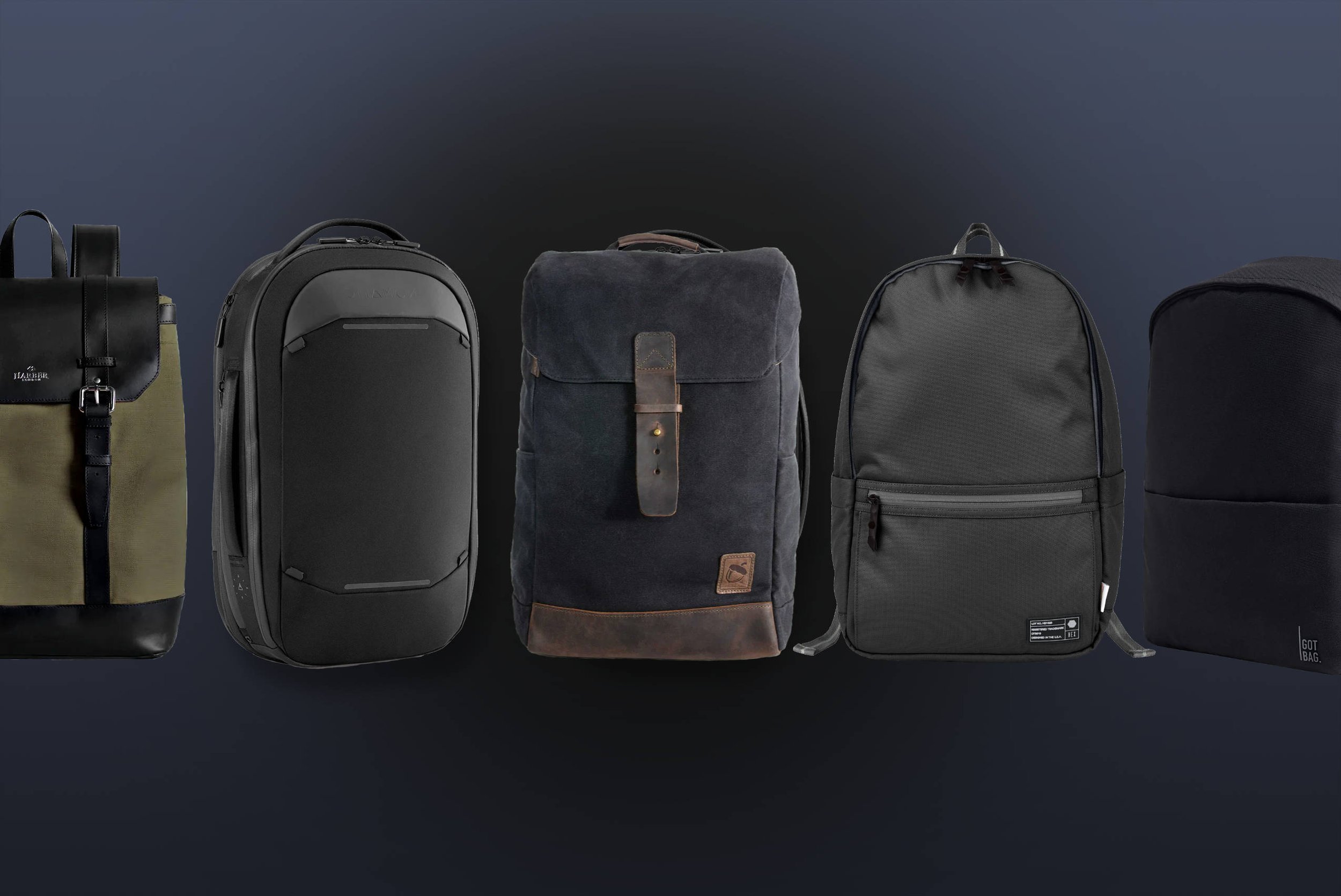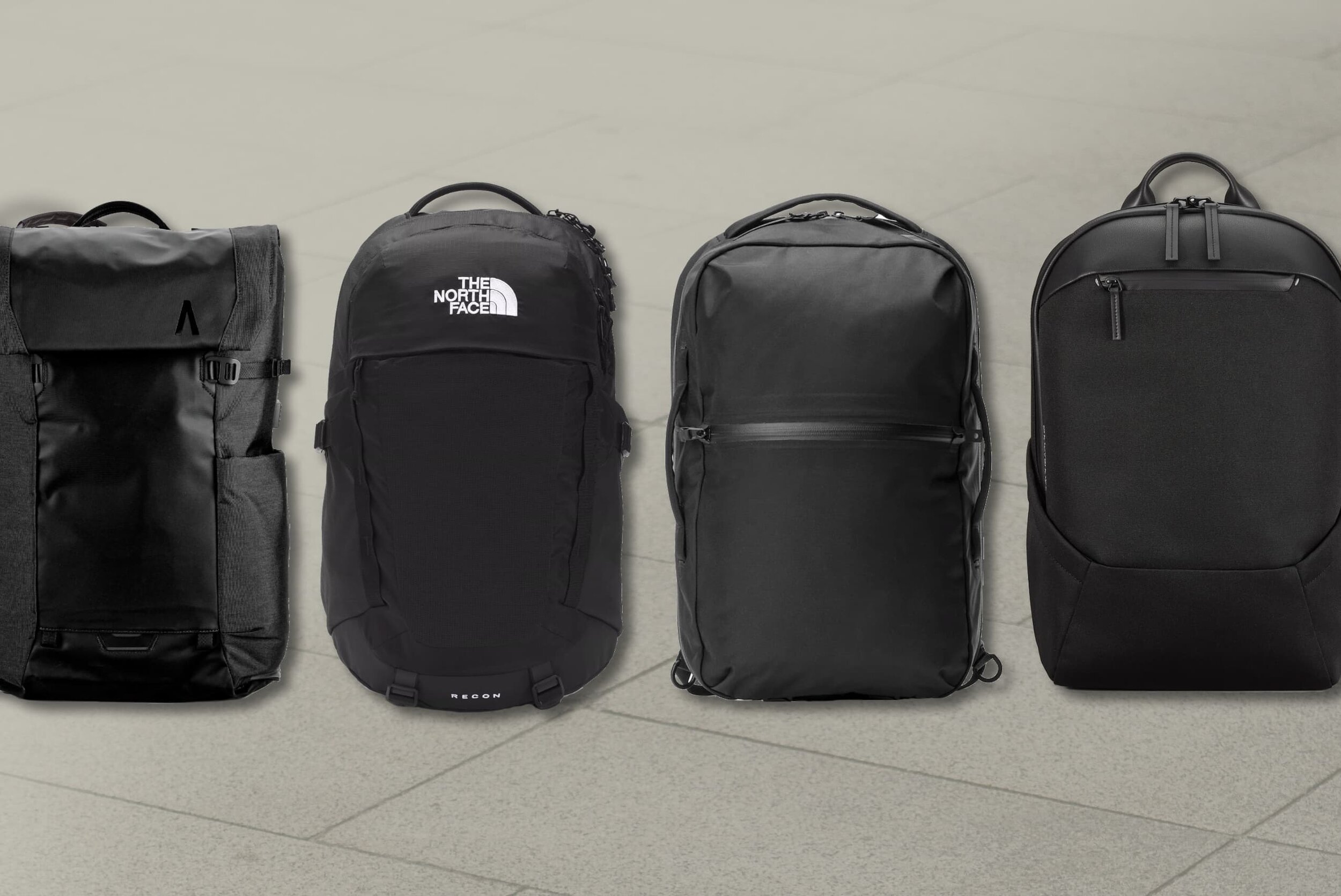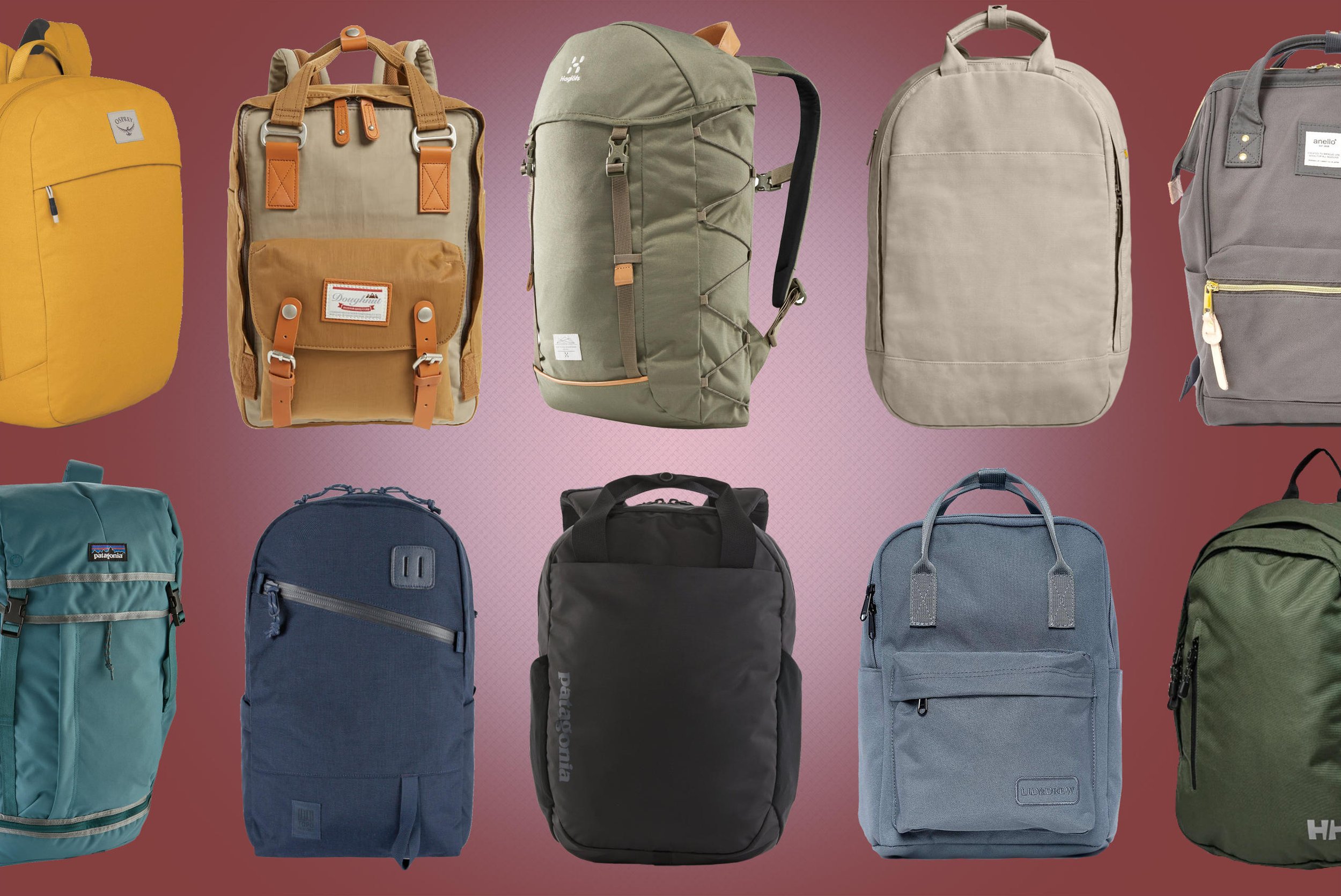Ultimate Backpack Size Guide - What Size Backpack Do I Need?
If you are planning on buying a backpack online then you know that picking the right size can get confusing. Without the backpack in front you it’s hard to tell if a backpack will be too big or too small.
In this visual backpack size guide we are going to go over standard backpack sizes and compare the difference in fit and capacity.
Our goal is to help you get a ballpark reading of what can fit inside each backpack size so you can pick a new backpacks with confidence even you are shopping online.
Video Guide
Backpack Capacity Explained
Backpack capacity is usually measured in either cubic inches (in³) or liters (L).
Although many backpack manufacturers measure their volume in cubic inches we are going to focus on liters because it is more common.
For the sake of simplicity we like to divide backpacks into simpler size categories of Small, Medium and Large. Note that these categories are just how we categorize backpacks here on Backpackies and are no way a universal way of determining backpack size.
Small Backpacks (Under 19L)
Medium Backpacks (20-29L)
Large Backpacks (30-39L)
Backpacks over 40L
In this guide we will only cover backpacks up to 39 liters. This is because backpacks over 40 liters are usually too large to comfortably use as a daily backpack for school, work or commuting.
Backpacks over 40 liters are best reserved for travel, hiking or backpacking where loading multiple days worth of gear is necessary.
For daypacks and everyday carry backpacks it is best stick to a backpack under 39 liters.
Small Backpacks (Under 19L)
Backpacks under 19 liters are best used for:
Essential daily carry (keys, water bottle, sunglasses and other small items)
Tech carry (laptop, tablet and accessories)
Travel day bags
Photo: 13L Able Carry Thirteen Daybag
What fits inside a 13L backpack?
Large headphones
Small book
Sweater
1-inch binder
Up to 13” laptop
SMALL BACKPACKS: Limited Laptop Carry
Backpacks under 14 liters usually are sometimes too small to include a laptop sleeve or compartment for laptops larger than 13-inches. Many smaller backpacks may only include a tablet sleeve or no tech sleeve at all. Keep this in mind if you are looking to purchase a smaller backpack.
It’s not until the 15-19 liter range that you will start to see larger laptop sleeves for laptops up to 15-inches.
SMALL BACKPACKS: Essentials Only
Backpacks under 19 liters are considered “essentials only backpacks”
This means you will be limited to personal items or tech carry with little room for much else. We recommend backpacks under 19 liters to anyone who needs a simple work backpack for things like a laptop, water bottle and snacks. Or as a secondary personal item backpack for airline travel.
Smaller backpacks also make great tech backpacks for anyone who just needs to carry a laptop, tablet, chargers and cables in addition to a few extra personal items.
The key takeaway with backpacks 19 liters and under is compromise. You may be able to pack just enough for an overnight stay or maybe a few large books and binders, but you won’t have the room for both at the same time.
Medium Backpacks (20-29L)
Backpacks 20-29L are best used for:
School and college (laptop, multiple books and notebooks)
Camera backpacks (DSLR camera, lenses and accessories)
Work and gym backpacks (Work items + change of clothes)
Photo: 20L GBY Ultralight Laptop Day Pack
What fits inside a 20L backpack?
Large headphones
Small book
2x hoodies or sweaters
Water bottle
2x 1-inch binders
Up to 15” laptop
Photo: 25L Herschel Little America (Amazon)
What fits inside a 25L backpack?
Large headphones
Water bottle
Small book
2x hoodies or sweaters
DSLR camera insert
2x 1-inch binders
Up to 15” laptop
Medium Backpacks: The Jack of all Trades
Medium size backpacks between 20-29 liters can be considered the Goldilocks of backpacks for most people. Not too small yet not too large - most everyday carry backpacks fall into the medium size category.
Backpacks between 20 liters and 29 liters make great backpacks for school, work and commuting thanks to their roomier main compartments. Here is where you’ll start to fit larger objects like camera gear, extra clothing and multiple large books.
Because medium size backpacks are larger in size, you will also start to see larger compartments and padded sleeves that can accommodate laptops up to 15 and 16 inches.
Large Backpacks (30-39L)
Backpacks 30-39L are best used for:
Extra large school backpacks (multiple large textbooks)
Travel backpacks (weekend and carry-on)
Large laptops (17” and 18”)
Photo: 30L The North Face Recon (Amazon)
What fits inside a 30L backpack?
Large headphones
Water bottle
Small book
2x hoodies or sweaters
DSLR camera insert
Large textbook
2x 1-inch binders
Up to 15” Laptop
Photo: 35L Jansport Big Student Backpack (Amazon)
What fits inside a 35L backpack?
Large headphones
Pencil case or dopp kit
Water bottle
Pair of shoes
2x hoodies or sweaters
Small book
2x 1-inch binders
DSLR camera insert
Large textbook
Up to 15” laptop
Large Backpacks: Who needs a backpack this large?
Backpacks over 30 liters can be overkill for most people who just need a daily carry backpack for essential items.
But we do recommend large backpacks for students who needs to carry an entire day’s worth of books, lunch and items for after school activities or sports.
These backpacks also make great gym and work backpacks for anyone who needs to carry their daily work items plus a change of clothes and shoes.
One important thing to note is that backpacks over 30 liters are much larger in size so smaller people may have a hard time finding one that fits properly. Poorly designed shoulder straps and back panels may increase the chances that a backpack will feel uncomfortable on smaller bodies. If you are on the smaller side, it pays to choose a backpack that was designed with a women’s fit to help accommodate slim shoulders and shorter torsos.
Large Backpacks: Enter the Travel Backpack
The 30-39 liter range is where you’ll start to see a lot of carry on travel backpacks - because this capacity is a sweet spot between having lots of packing room without being too large to carry.
Backpacks over 30 liters usually have enough room for multiple days worth of clothing and can even have main compartments large enough to fit bulkier items like shoes.
Large Backpacks: XL Laptop Sleeves
At these larger sizes you can expect to find more options for extra large laptop storage. Because of their larger footprint, most of 18-inch laptop backpacks are in the 30-39 liter size range.
What Else You Should Know
Larger capacity = larger backpack
A basic rule of thumb is that the larger the capacity the larger the backpack will be.
Backpack size will impact fit. While larger people will benefit from wearing a larger backpack, smaller people may want to stick with a smaller backpack size to accommodate slim shoulders and short torsos. This is one reason it is so common to see many women’s backpacks under 20 liters.
Backpack capacity is only part of the story
A backpack’s materials, shape and overall design will impact what fits inside just as much as its capacity number.
Example:
We tested two backpacks: the 16 liter Day Owl Backpack and the 19 liter Venque Amsteram 2.0.
Even though the Venque Amsterdam 2.0 technically has more capacity at 19 liters, it could fit just about the same stuff as the smaller 16 liter Day Owl Backpack.
Why? Shape and materials.
The Day Owl features a clamshell backpack design and is made out of flexible waxed canvas material. This allows the backpack itself to flex allowing you to cram extra items inside the main compartment.
The Venque Amsterdam 2.0 is made out of ridged fabric that allows the backpack to keep its shape even when empty. The materials used on the Amsterdam 2.0 plus its top loading design makes the Venque Amsterdam less forgiving when filling the backpack up.
A backpack’s shape and materials are something to keep in mind when determining what can fit inside. Even if two backpacks have the same capacity that doesn’t mean they will fit exactly the same items.
This concludes our backpack size guide! If you want to learn more we encourage you to take a look at some of our other guides:

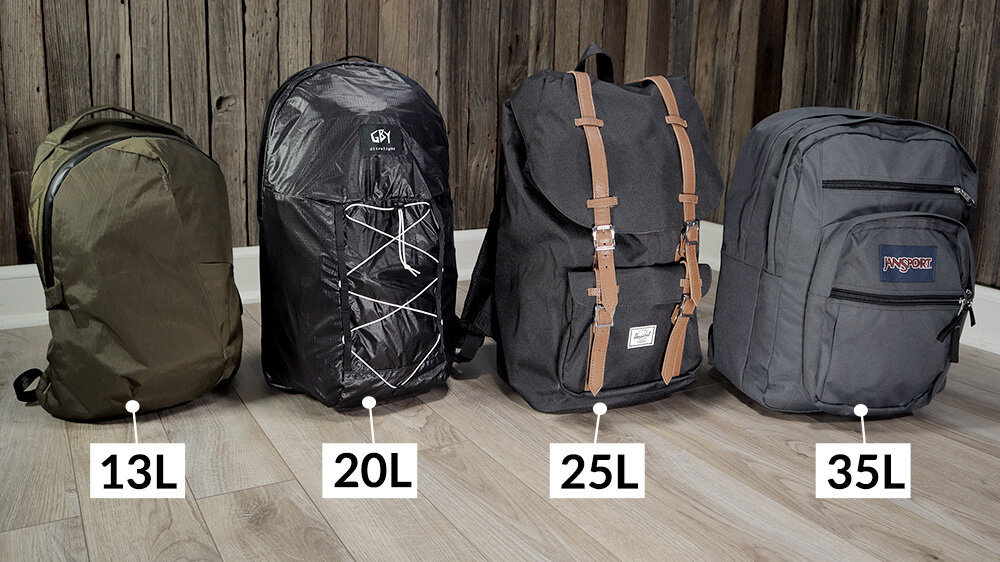

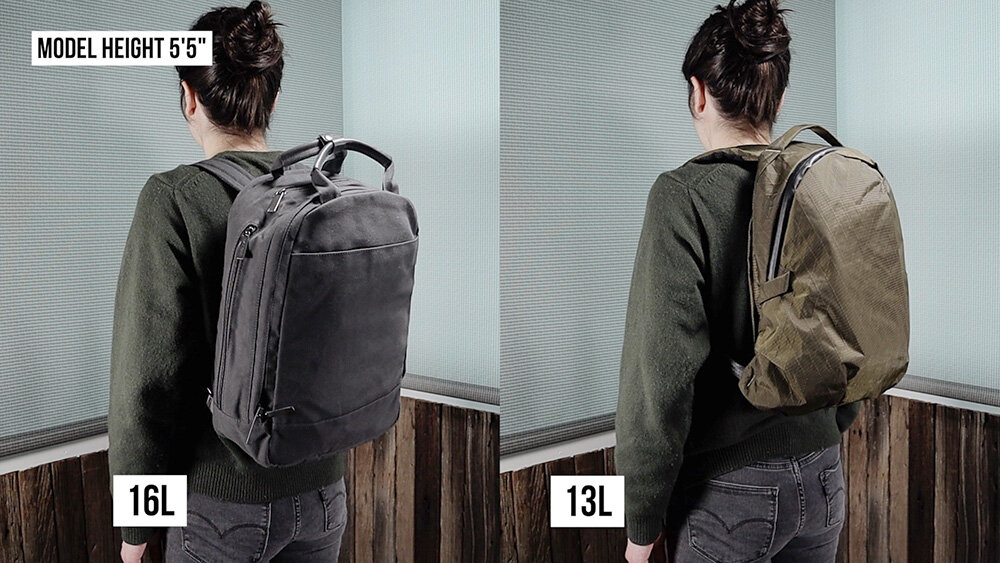
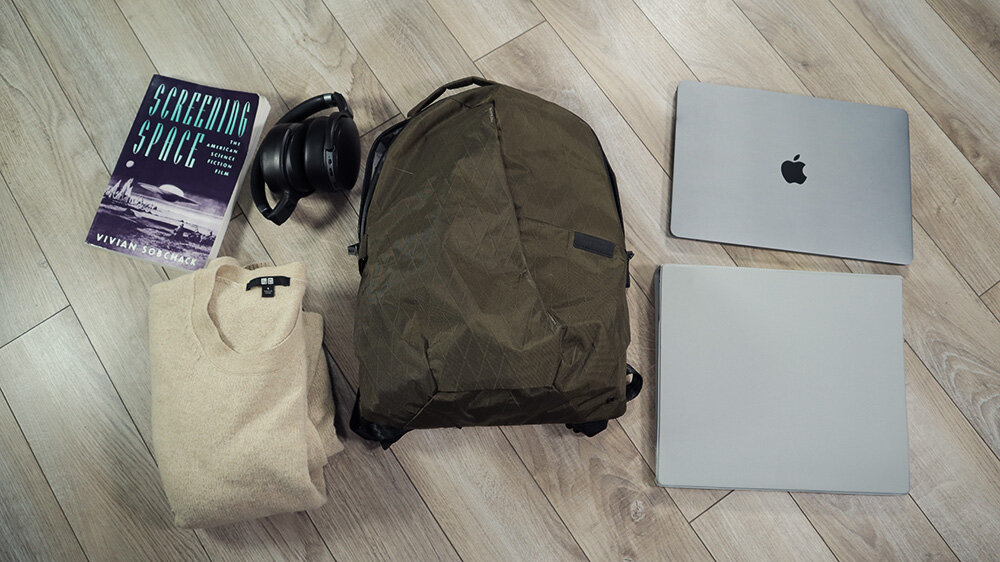

![Sherpani Soleil Anti-Theft [Review]](https://images.squarespace-cdn.com/content/v1/583335f52994ca7d6adc6f3d/1705706069013-0XNK1LS4S352NR05E8FP/Sherpani+Soleil+Anti+Theft+Backpack.jpg)
![Able Carry Thirteen Daybag [Review]](https://images.squarespace-cdn.com/content/v1/583335f52994ca7d6adc6f3d/1700149975518-TAYH77S8LQ9XP49PLDU9/Able+Carry+Thirteen+Daybag+late+2023+update.jpg)
![Doughnut Macaroon [Review]](https://images.squarespace-cdn.com/content/v1/583335f52994ca7d6adc6f3d/1689621252848-BO595C58U60UY3KH1O93/Doughnut-Macaroon-backpack-review.jpg)


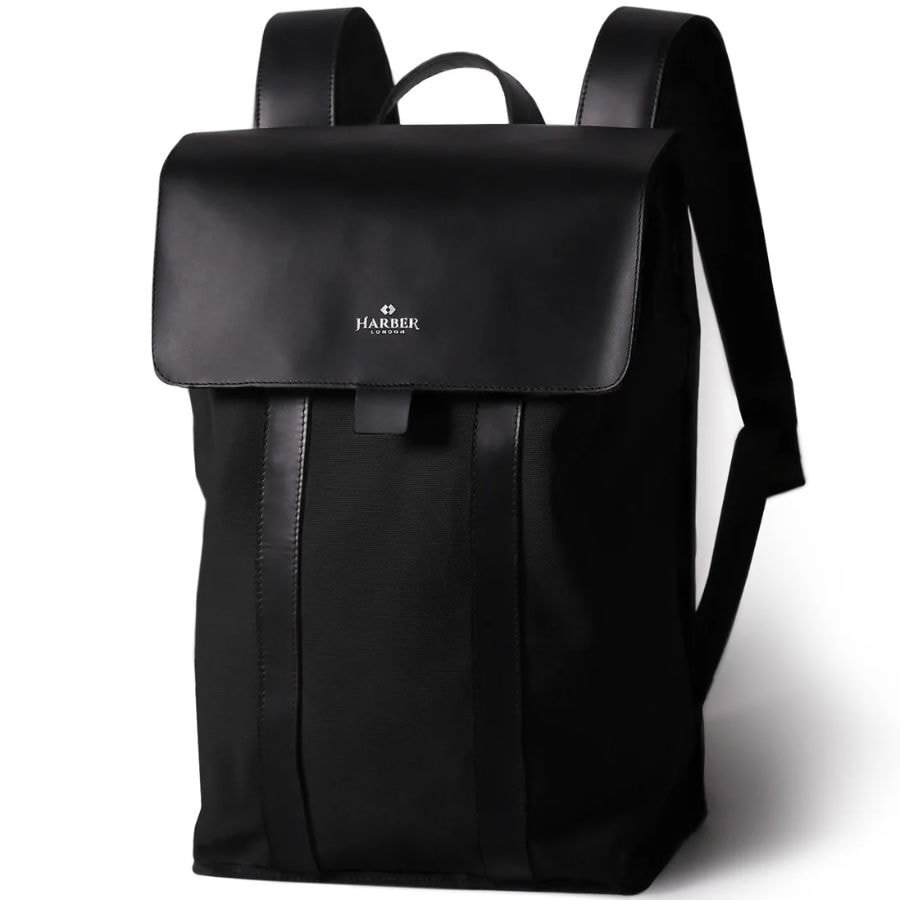




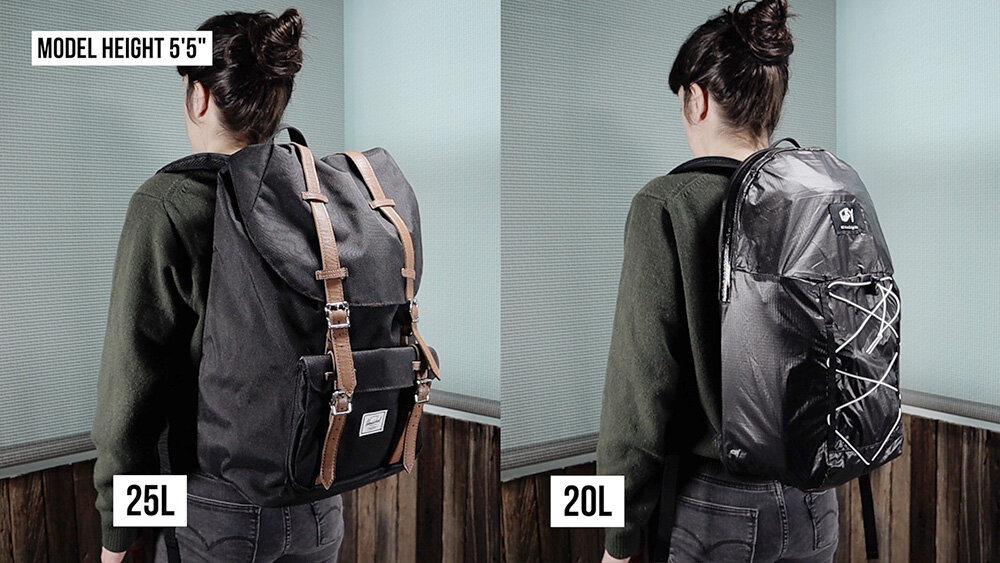
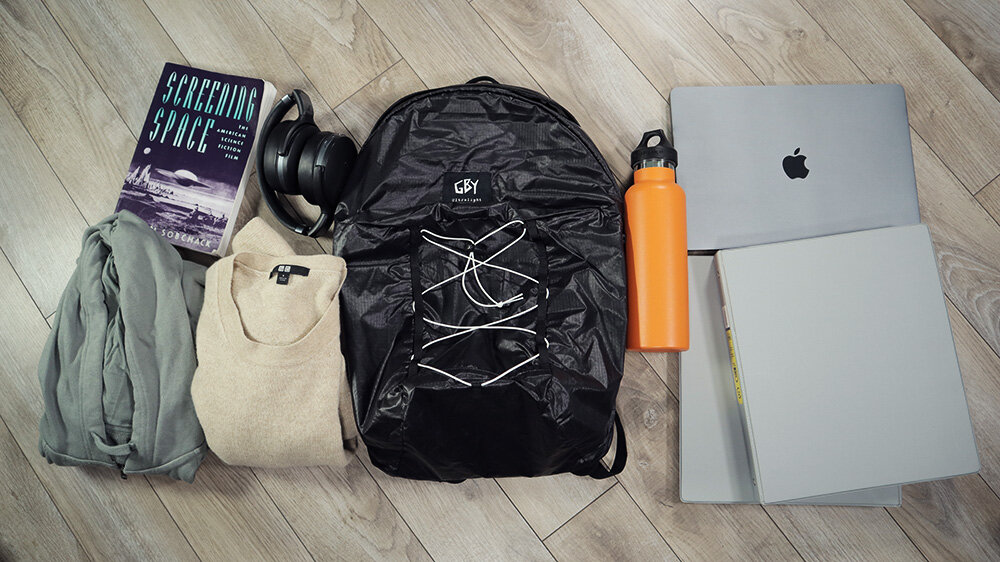
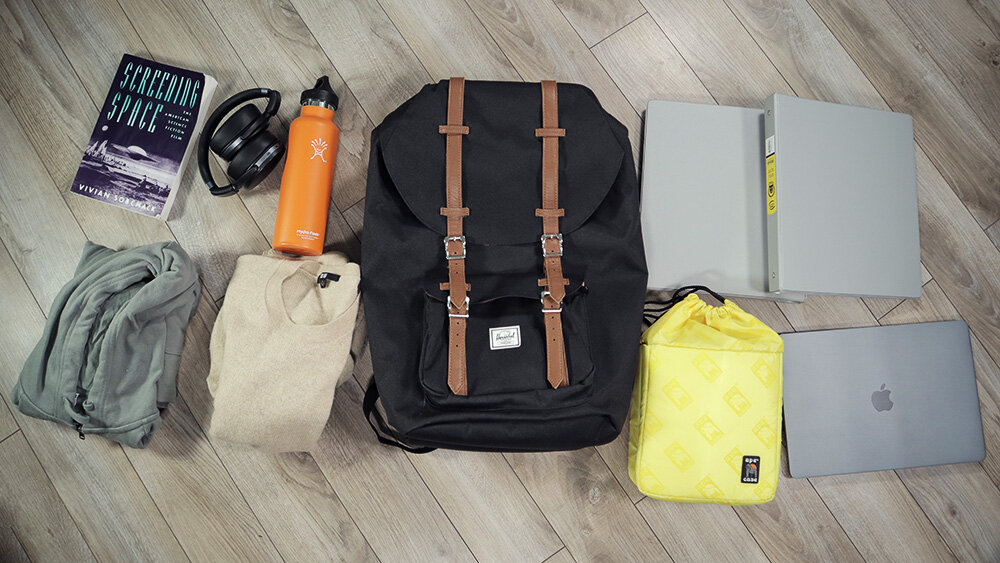
![Nayo Smart Urban U5 Backpack [Review]](https://images.squarespace-cdn.com/content/v1/583335f52994ca7d6adc6f3d/1749484748330-TESWL00VY3WTSVIS4FTF/Nayo+Smart+Urban+U5+Backpack+Review.jpg)
![Mammut Seon Transporter 25L [Review]](https://images.squarespace-cdn.com/content/v1/583335f52994ca7d6adc6f3d/1723853198679-ZN8K8BCV75B391ECD7MZ/Mammut+Seon+Transporter+25+backpack.jpg)
![Patagonia Atom Tote Pack 20L [Review]](https://images.squarespace-cdn.com/content/v1/583335f52994ca7d6adc6f3d/1688738135400-L6V0WQZY59I9SPI9J0S7/patagonia-atom-tote-pack-20L-backpack.jpg)
![Under Armour Hustle Sport [Review]](https://images.squarespace-cdn.com/content/v1/583335f52994ca7d6adc6f3d/1679248026644-03D7A32Y0BU2L6HHQQJT/ua-hs-00.jpg)
![Able Carry Daily Plus [Review]](https://images.squarespace-cdn.com/content/v1/583335f52994ca7d6adc6f3d/1676463048944-VE55HUA9XAJY5INXVXE4/ac-dpl-00.jpg)
![King Kong Heritage Leather [Review]](https://images.squarespace-cdn.com/content/v1/583335f52994ca7d6adc6f3d/1674606366495-TZFKPXDO6M2C485C28IX/KK-HL-00.jpg)
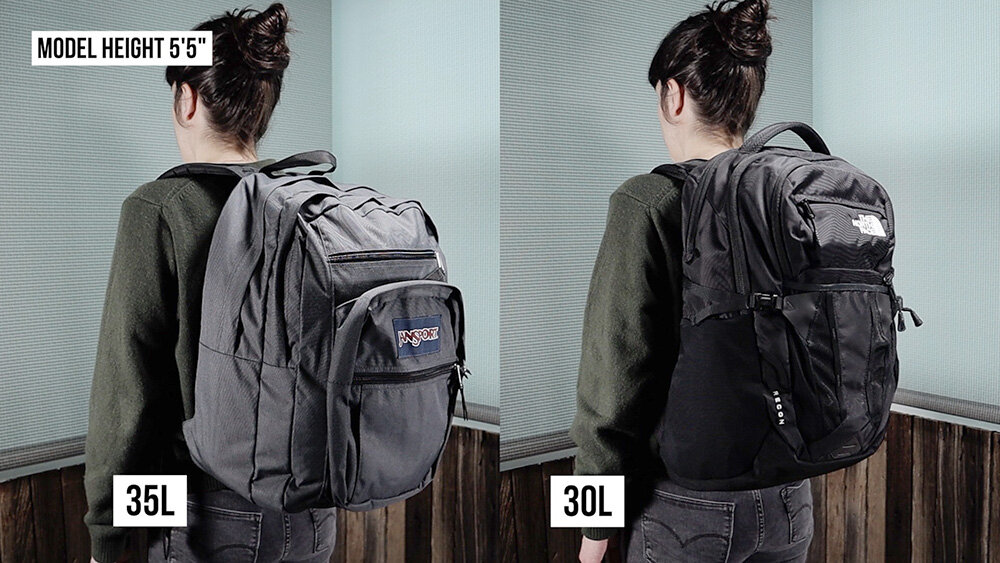
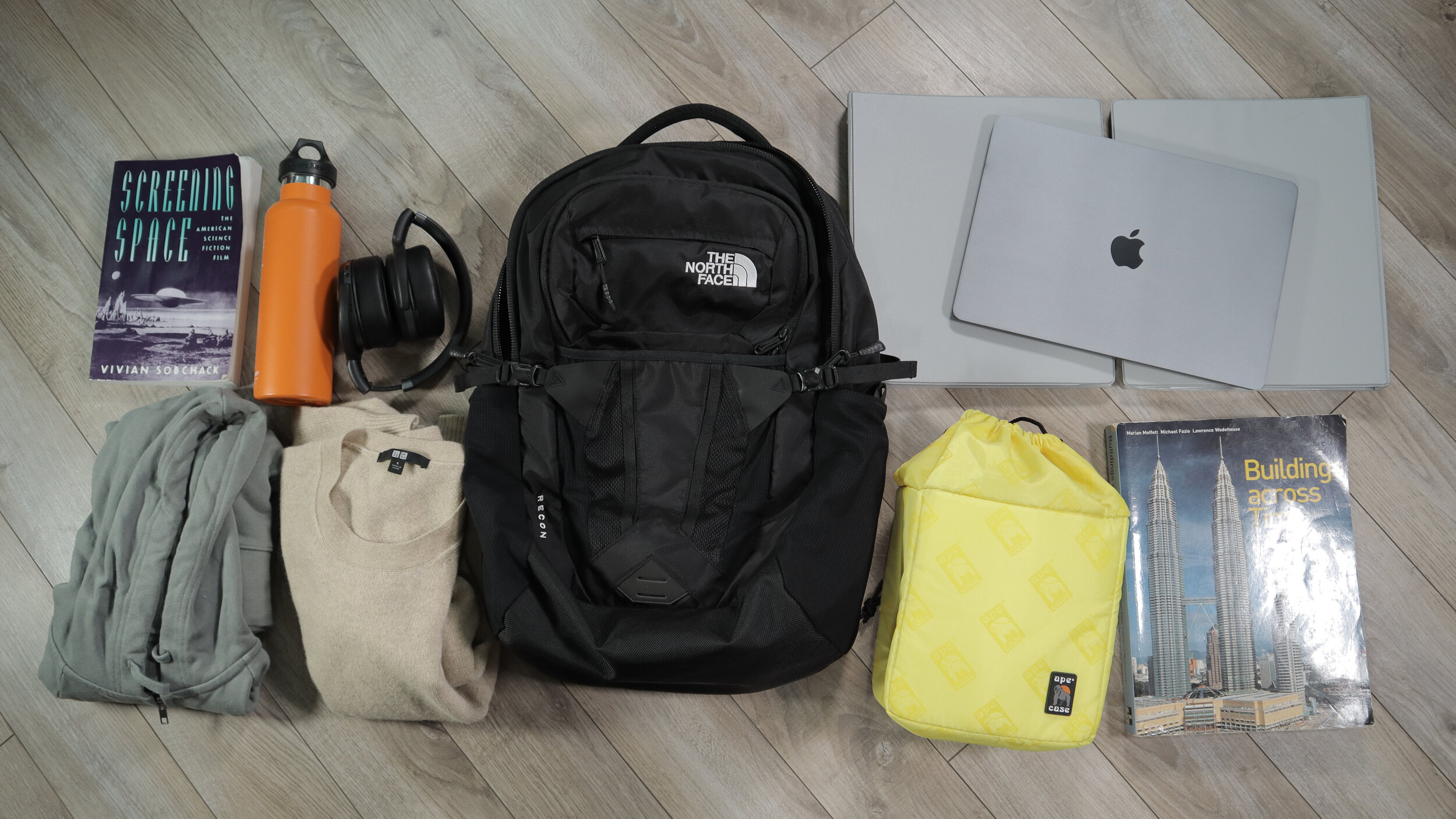
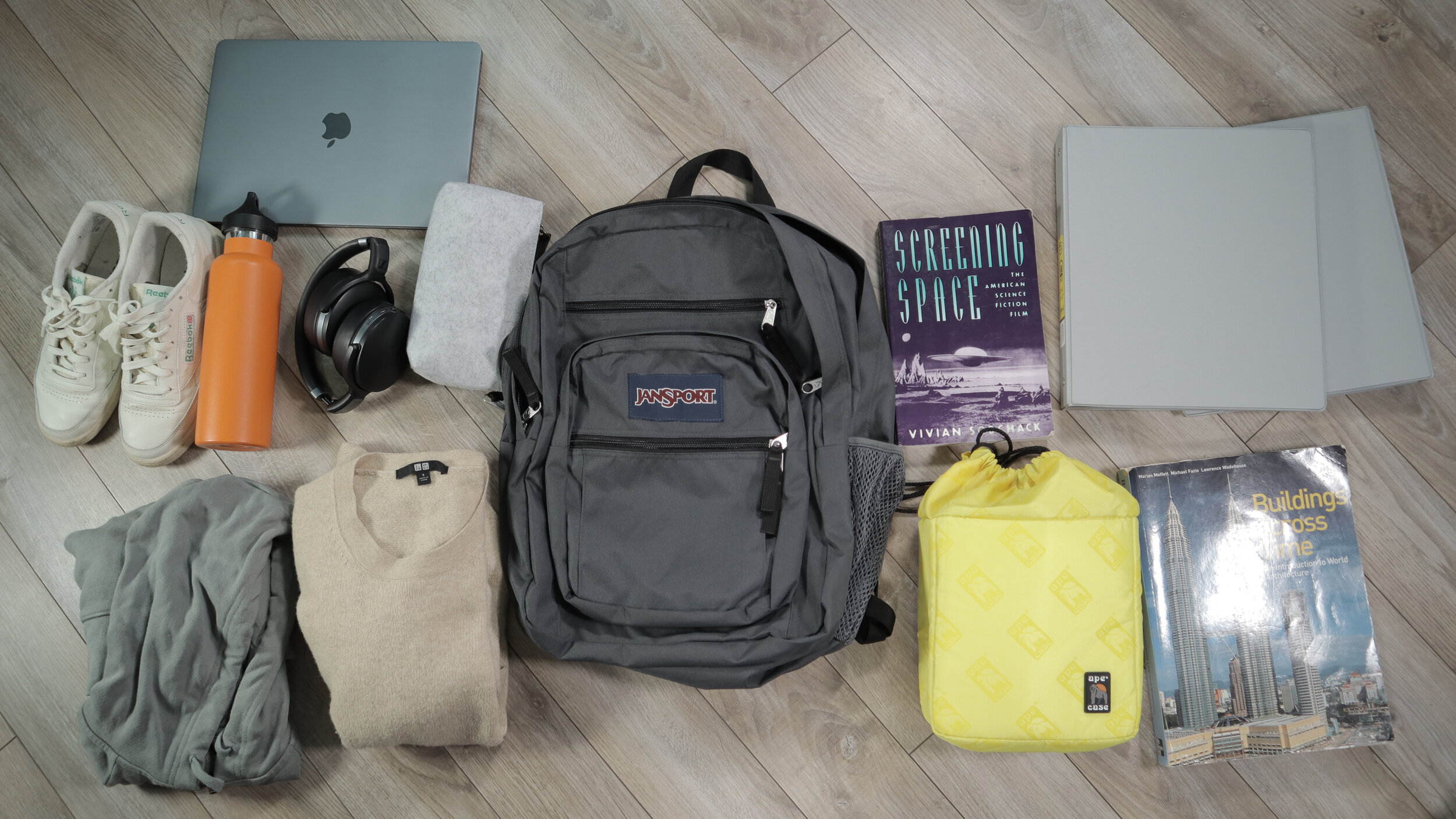



![North Face Recon Backpack [Review]](https://images.squarespace-cdn.com/content/v1/583335f52994ca7d6adc6f3d/1627907878308-GARQGP75FZ4Z0SDMREUQ/TNF-REC-00.jpg)
![Pacsafe Venturesafe EXP35 [Review]](https://images.squarespace-cdn.com/content/v1/583335f52994ca7d6adc6f3d/1669480572639-PHW709SFVZ6MADPEL8TC/PS-VS-35-00.jpg)
![King Kong EDGE35 [Review]](https://images.squarespace-cdn.com/content/v1/583335f52994ca7d6adc6f3d/1601940177410-VEP4Y81DYKVHCHHKJXPS/King-Kong-EDGE-35.jpg)



